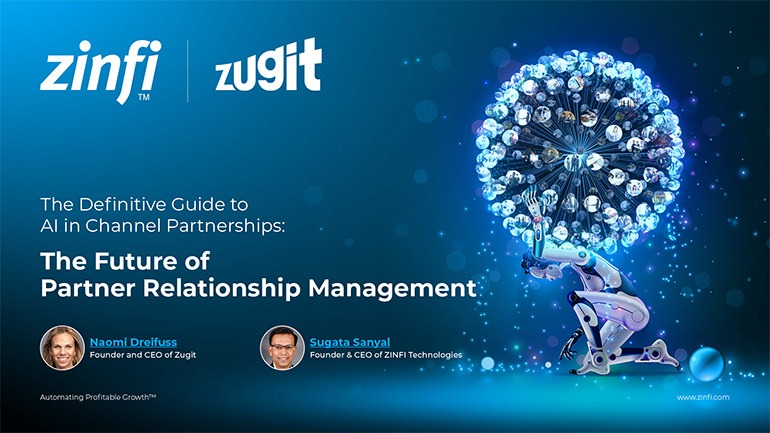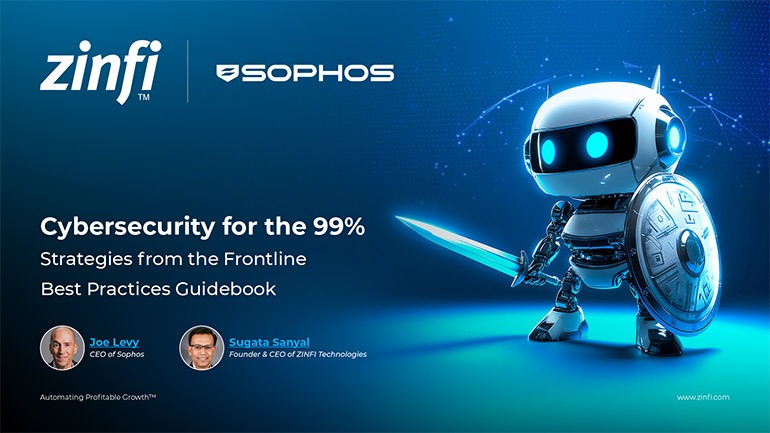Glossary - How to - Co-Branded Campaign
How to Manage a Co-Branded Campaign?
Introduction
Defining Co-Branded Campaign Management
A co-branded campaign is a strategic marketing collaboration between two or more brands, typically between a manufacturer and its channel partners, where both parties contribute their brand equity to promote a unified product, service, or event. Co-branded campaign management involves planning, executing, monitoring, and optimizing these joint marketing efforts to achieve mutual benefits such as increased brand exposure, lead generation, and sales. This form of marketing is particularly prevalent in channel ecosystems, where vendors rely on partners to amplify their reach and credibility in the market. Effective co-branded campaign management ensures that both parties maintain consistent branding, messaging, and compliance with mutual goals.
Relevance to Partner Management Automation
In Partner Relationship Management (PRM), co-branded campaign management is pivotal in automating and scaling joint marketing efforts. PRM platforms such as those offered by ZINFI streamline creating, approving, and distributing co-branded marketing assets. Automation eliminates manual errors and ensures brand compliance across campaigns. Furthermore, PRM solutions enable partners to access pre-approved templates, run localized campaigns, and track real-time performance metrics, increasing campaign effectiveness and deepening the strategic alignment between vendors and partners. As channel ecosystems grow, automating co-branded campaign management maintains consistency, accelerates go-to-market strategies, and maximizes ROI.
Key Takeaways:
Establish Clear Brand Guidelines and Objectives:
Setting clear brand guidelines is foundational to a successful co-branded campaign. Each brand must agree on logo usage, color palettes, font styles, tone of voice, and legal compliance. These elements ensure visual and thematic consistency across marketing channels. Objectives should also be aligned at the outset: Is the goal lead generation, brand awareness, or product sales? Define KPIs and establish a project management structure to ensure accountability. An efficient PRM system, such as ZINFI’s Co-Branded Marketing module, centralizes these assets and ensures that partner users follow brand-compliant workflows.
Leverage Automated Campaign Tools:
Manual campaign management is prone to error and inefficient. PRM automation tools allow vendors to upload pre-approved marketing templates, which partners can then personalize with their logos and contact information. ZINFI’s Co-Branded Campaign Management software enables this through a self-service portal, dramatically reducing approval times and ensuring on-brand execution. Campaign modules can include emails, landing pages, social posts, and brochures. Additionally, automation enables real-time campaign tracking, helping both parties quickly measure engagement and optimize for better results.
Integrate Multi-Touch Marketing Channels:
Co-branded campaigns should span multiple marketing channels like email, social media, web, events, and print to maximize reach and effectiveness. A unified platform like ZINFI’s PRM can facilitate multichannel campaign execution from a single dashboard, ensuring consistent messaging and uniformly tracked KPIs. Integrating CRM systems allows for better lead attribution and pipeline tracking. Partners can select channel-specific templates and adapt them to their audience, resulting in more personalized and relevant outreach.
Monitor Compliance and Brand Integrity:
Compliance is often a challenge in distributed marketing environments. Unauthorized use of brand assets or off-message communications can dilute brand equity. ZINFI’s platform mitigates this by embedding brand rules into co-branded templates and workflows. Vendors can monitor how assets are used, track edits, and revoke access if guidelines are violated. Audit trails and approval processes are automated, ensuring campaign transparency and accountability. This level of control fosters trust and mitigates brand risk.
Measure Performance and Optimize:
Data is crucial to refining co-branded campaigns. Utilize built-in analytics tools within your PRM platform to track impressions, click-through rates, conversion rates, and partner participation. ZINFI offers comprehensive dashboards that enable vendors and partners to evaluate campaign ROI. Insights are used to A/B test subject lines, refine messaging, and reallocate budgets toward high-performing tactics. This ongoing optimization enhances campaign outcomes and strengthens the strategic relationship between vendor and partner.
Summary of Key Takeaways:
Effective co-branded campaign management requires a structured approach encompassing clear guidelines, automation, multichannel strategies, compliance monitoring, and data-driven optimization. Leveraging ZINFI’s PRM tools ensures seamless coordination between vendors and partners, significantly enhancing marketing performance. These best practices safeguard brand integrity and foster stronger, more productive partnerships. By integrating these elements into your PRM strategy, organizations can scale their co-branded marketing efforts, reach new audiences, and drive higher ROI.
Key Examples:
- Automotive Manufacturing: Automotive brands often collaborate with dealerships for joint promotional events or seasonal sales. A co-branded campaign might include digital ads, brochures, and test-drive events featuring the vehicle manufacturer’s and dealership’s branding. ZINFI’s PRM tools can help manage regional compliance while allowing local dealers to customize offers and messages, ensuring consistency and local relevance.
- Consumer Electronics: Electronics manufacturers often partner with retailers or distributors to launch new products. Co-branded email campaigns, product demos, and launch events benefit from standardized assets provided through a PRM platform. These assets can be localized and personalized to reflect the reseller’s audience, maintaining brand consistency while enabling flexible execution.
- Energy Production: Co-branded campaigns are common among solar panel manufacturers and installation partners. These campaigns often highlight environmental benefits and government rebates. With ZINFI’s PRM, partners can run geo-targeted email and social campaigns using vendor-provided templates, ensuring accurate messaging while adhering to local regulations.
- Financial Services: Banks and financial service providers frequently co-brand with insurance companies or fintech partners. Campaigns might include cross-promotions on mobile apps, email newsletters, and landing pages for bundled services. PRM tools enable secure sharing of sensitive financial data and ensure compliance with regulatory standards while maintaining brand consistency across platforms.
- Food and Beverage: Food brands often partner with grocery chains or restaurants to promote seasonal products or limited-time offers. Co-branded campaigns may involve in-store displays, digital coupons, and social media collaborations. ZINFI’s centralized asset management and local execution modules allow partners to customize campaigns to local demographics while maintaining compliance.
- Healthcare Services: Healthcare organizations, including pharmaceutical companies and clinics, use co-branded campaigns to promote new treatments or services. These campaigns must follow strict compliance and branding guidelines. ZINFI’s PRM ensures legal approval workflows and campaign execution are traceable and auditable.
- Information Technology: IT vendors collaborate with VARs (Value-Added Resellers) and MSPs (Managed Service Providers) for solution-based campaigns. Co-branded assets like webinars, eBooks, and product datasheets are distributed via PRM portals. Integration with CRM tools allows seamless lead tracking and ROI analysis.
- Pharmaceutical Development: Pharmaceutical brands often run co-branded campaigns with research institutions or healthcare providers. These campaigns may focus on awareness of clinical trials or new drug therapies. Compliance and accuracy are paramount. PRM systems help manage approval cycles and version control, ensuring only validated materials are used.
- Retail Industry: Retailers partner with consumer brands for store-specific promotions. Co-branded flyers, emails, and point-of-sale displays are tailored to the retailer’s customer base. ZINFI’s localized marketing automation allows the efficient rollout of these campaigns while ensuring brand standards are upheld.
- Telecommunications: Telecom providers often partner with handset manufacturers for joint offers. Co-branded campaigns may feature online ads, promotional bundles, and trade-in programs. ZINFI’s campaign management tools support seamless collaboration, real-time asset updates, and performance tracking, facilitating effective multi-partner execution.
Conclusion:
Co-branded campaign management is crucial in modern channel marketing strategies. It enables vendors and partners to amplify their brand messages, extend market reach, and jointly generate demand. In today’s complex partner ecosystems, effective management of such campaigns requires the integration of clear brand guidelines, automation, multichannel execution, compliance monitoring, and performance analytics.
Partner Relationship Management platforms such as ZINFI provide the essential infrastructure to streamline and automate every stage of co-branded campaign execution. From pre-approved asset creation and distribution to compliance tracking and ROI measurement, these tools empower vendors and partners to collaborate efficiently and confidently scale their marketing efforts.
Industry-specific implementations further highlight the versatility and value of co-branded campaigns. Whether in IT, healthcare, or consumer goods, consistent branding, automation, and localized customization remain universally applicable. As partner ecosystems become more dynamic and competitive, leveraging co-branded campaign management effectively can be a key differentiator.
Organizations must prioritize co-branded campaign capabilities to foster stronger partner relationships, achieve better marketing outcomes, and optimize their PRM strategies. With the right tools and best practices in place, co-branded campaigns can become a powerful engine for growth and partnership success.
Associated Keywords:
- Co-Branded Marketing Strategy
- PRM Campaign Automation
- Partner-Led Joint Marketing
















